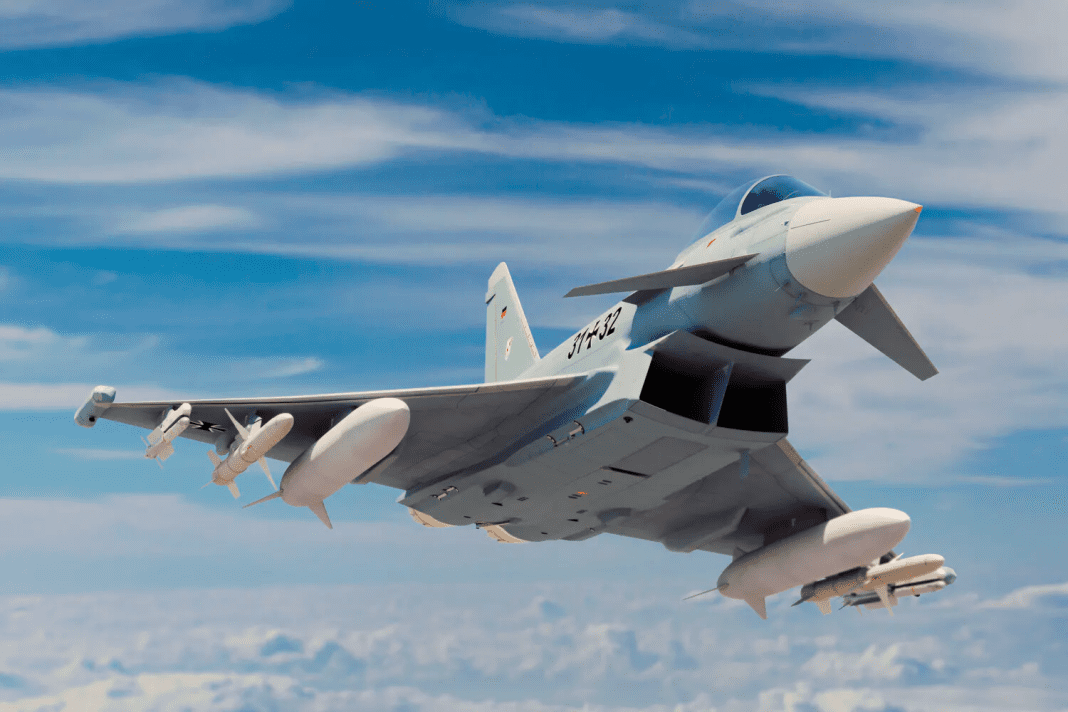A major breakthrough in military technology is happening in Europe. Defense start-up Helsing has announced that Europe is just a few years away from deploying AI fighter jets without human pilots. This statement came after the company successfully tested its advanced artificial intelligence (AI) software on a real AI fighter jet during recent flight trials.
Helsing’s AI Fighter Jet Flies over Baltic Sea in Real Combat Test
The test flights were conducted over the Baltic Sea in May and June. Centaur, Helsing’s artificial intelligence system, operated a Gripen E fighter plane manufactured by Swedish Arms Company Saab during these flights. During the flight simulations, the AI was fully in control while a safety pilot stayed in the cockpit.
Stephanie Lingemann, Senior Director of Helsing’s air division, shared that these experiments show how fast the technology is progressing. She said the use of AI in real-world combat situations is now a matter of “years rather than decades.” According to her, the system managed to reach the equivalent of one million hours of flight experience in just 72 hours — a huge leap compared to human pilots, who take a lifetime to reach around 5,000 hours.
She also explained that this level of AI performance means faster decision-making and no need to risk human lives in dangerous combat zones. “You can get to superhuman performance very quickly,” she said.
Pilots and AI Fighter Jet Software to Operate Together During Transition
Helsing’s AI software is not designed to completely replace human pilots right away. Instead, the company envisions a long transition period where AI and pilots work together. In this model, the pilot would still be in control, but the AI would assist in performing complex maneuvers and identifying threats quickly.
Lingemann said, “I think we will have decades where we see both,” explaining that pilots would gradually move into roles similar to drone operators. This step-by-step transition is similar to how drones were introduced in military operations over time.
F-35 Fighter Jet Becomes $2 Trillion Disaster as Allies Abandon Costly Jet Amid Broken Promises
Globally, countries like the United States, Russia, and China are also developing similar systems. Some projects involve creating “loyal wingmen” — unmanned aircraft that fly alongside traditional jets and help with surveillance or attacks. Experts believe this represents a complete change in the way air combat is conducted.
Colonel Kevin Anderson of the US Air Force called this development a “paradigm shift in air combat worldwide.” He shared this view in a recent article for the Joint Air Power Competence Centre, a NATO think-tank.
Rapid Growth, Ethical Concerns, and Ukraine War Connection
Helsing was founded just four years ago but has already become one of Europe’s most valuable defense technology companies. In June, Spotify founder Daniel Ek’s investment business led a €600 million round, giving it a significant increase in capital. The corporation was valued at an astounding €12 billion as a result.
The company first focused on building AI software for defense systems. Now, it has expanded into creating its own drones and even underwater vehicles. Three Germans founded Helsing, and the company has established offices in Munich, Berlin, London, and Paris. It aims to present itself as a pan-European company, especially as European nations work to boost defense production within the continent.
But with this rapid rise, Helsing also faces questions. There is growing concern around autonomous weapons, especially when they are capable of deciding when and where to strike. Antoine Bordes, Helsing’s Vice President for Artificial Intelligence, stated that human decision-making remains at the center of their weapon systems. He added that Europe must not shy away from building such technologies, or risk falling behind other nations.
🧨✈️ Europe’s Next-Gen Fighter Jet Faces Breakdown: Airbus-Dassault Feud Threatens $100 Billion Dream
Simon Brünjes, who leads Helsing’s armed drone division, made it clear that the company does not want to create fully autonomous lethal drones. He recently visited Ukraine, where he saw civilian buildings and kindergartens located dangerously close to the war zones. In such areas, Brünjes stressed, decisions about using force must remain in human hands.
Helsing supplied Ukraine with 10,000 drones, including the HF-1, a so-called “kamikaze drone” that destroys itself upon impact with its target. Ukrainian soldiers raised concerns about the cost and performance of these drones. Brünjes acknowledged the HF-1’s “capability ceiling” but said the company is currently testing a new model, the HX-2, in Ukraine, which could perform much better.

